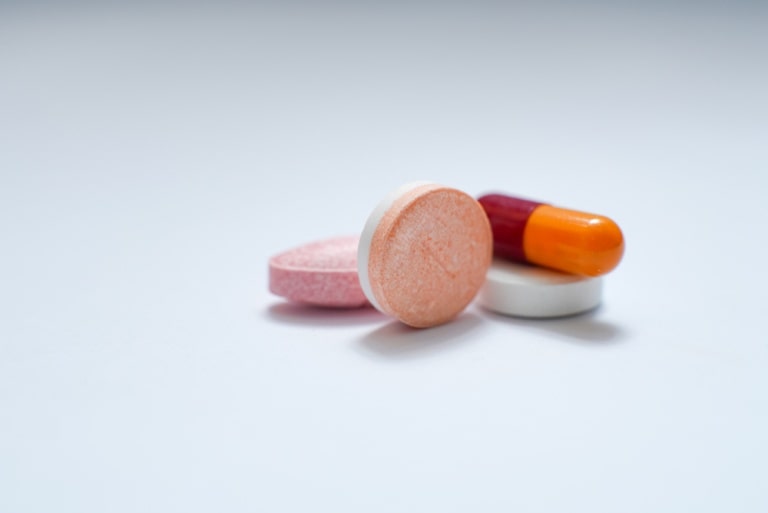High levels of cholesterol, particularly LDL (low-density lipoprotein) cholesterol, often referred to as “bad” cholesterol, pose significant risks to cardiovascular health.
Excessive LDL cholesterol in the bloodstream can accumulate plaque on the arteries’ walls, medically called atherosclerosis.
Atherosclerosis narrows the arteries and gradually obstructs the blood flow to many body parts, including the heart. Such obstructions increase the risk of severe health events, including heart attacks and strokes.
Moreover, when plaques become unstable and rupture, they can form blood clots that block blood flow entirely, leading to acute cardiovascular emergencies.
Hence, managing cholesterol levels is critical to preventing these dangerous conditions and maintaining heart health. Statins play a pivotal role in this management strategy.
They’re the first line of defense in treating patients with high cholesterol, especially when lifestyle changes like diet and exercise aren’t enough to reduce cholesterol levels significantly.
How Do Statins Work?
Statins are a class of drugs prescribed to lower blood cholesterol levels, thereby reducing the risk of cardiovascular diseases such as heart attacks and strokes.
They work by inhibiting an enzyme called HMG-CoA reductase, which plays a crucial role in the liver’s production of cholesterol.
There are several types of statins available, each with its characteristics, potency, and potential side effects, as follows:
- Lipitor, which has the generic Atorvastatin, is known for its high potency. This means it can significantly reduce LDL cholesterol levels, even at lower doses. It’s often prescribed for patients who need a substantial reduction in their cholesterol levels to reach their target. Its effectiveness extends to reducing the risk of heart attack and stroke in individuals with heart disease or those at high risk.
Moreover, it can be taken at any time of the day, with or without food, making it convenient for patients. This flexibility integrates the medication seamlessly into daily routines, enhancing adherence and ensuring consistent therapeutic effects.
- Zocor, which has the generic Simvastatin, is considered less potent than Lipitor. It’s often used for patients who may not need as aggressive a reduction in their cholesterol levels.
One key consideration with Zocor is that it should be taken in the evening, as the body’s cholesterol production peaks at night. This timing can optimize its cholesterol-lowering effects.
Statins may also affect men and women differently. For example, Lipitor’s Side Effects in Women differ slightly from men’s, including a higher risk of muscle pain and weakness. The effectiveness of statins in reducing cardiovascular events can also vary between genders. Let’s further discuss them in the following:
Effectiveness in Lowering Cholesterol
Statins are broadly effective in reducing LDL cholesterol levels for both genders. However, research suggests that the efficacy of statins in cholesterol reduction may also intersect with variations across different races and ethnicities.
For example, studies have indicated that African American women may not experience as significant a reduction in LDL cholesterol levels with certain statins as Caucasian women. This is potentially due to genetic factors affecting metabolism.
One notable genetic factor involves variations in the SLCO1B1 gene, which codes for statin uptake and processing. Its variations can decrease the liver’s capacity to absorb statins effectively. Unfortunately, such variations are prevalent in African American populations.
Another example is East Asian males. They often require lower doses of statins to prevent adverse effects due to higher drug plasma levels at given doses. This is again due to genetic variations that affect the metabolism of these drugs.
Specifically, genetic differences in enzymes responsible for statin metabolism, such as those encoded by the CYP450 gene family (notably CYP3A4 and CYP2C9), can lead to slower processing and elimination of statins from the body in East Asian populations.
This slower metabolism means that statins remain in the bloodstream longer, leading to higher plasma levels, which increases the risk of side effects at doses that are typically effective and well-tolerated in other populations.
Risk Reduction for Cardiovascular Diseases
The researchers suggested that the degree of risk reduction for heart disease and stroke in women who are on statins can vary and be less pronounced compared to men. This is especially true among those who are postmenopausal.
Estrogen is believed to offer some protection against heart disease by affecting lipid profiles and having anti-inflammatory effects. However, after menopause, the reduction in estrogen levels could diminish this protective effect, potentially altering how statins work in reducing cardiovascular risk.
Furthermore, postmenopausal women are more likely to have comorbid conditions such as diabetes, hypertension, and obesity. These can independently affect cardiovascular risk and potentially influence how statins work.
Side Effects and Tolerability
The common side effects of statins include in men muscle aches, increased liver enzymes, and, occasionally, memory issues. These are generally manageable and don’t outweigh the benefits of statin therapy.
Women also experience the same side effects. However, studies have shown that they report these side effects, particularly muscle aches, more frequently and with greater intensity.
The reason for this is multifaceted and can be attributed to biological, physiological, and possibly pharmacokinetic differences between genders.
For example, women generally have a lower body weight and different body composition than men, which can affect drug concentration and metabolism. This difference might lead to higher plasma concentrations of statins in women, increasing the risk of side effects.
In addition, women, particularly older women, are more likely to be taking multiple medications (polypharmacy), which can increase the risk of drug-drug interactions. Such interactions may enhance the side effects of statins, including muscle aches.
Final Thoughts
Several studies have proven statins’ effectiveness in lowering cholesterol levels. However, it’s essential to acknowledge the gender-specific differences in response to the treatment.
Hence, it’s highly advisable for individuals considering or currently on statin therapy to consult with a doctor for more effective and safer medical guidance.
